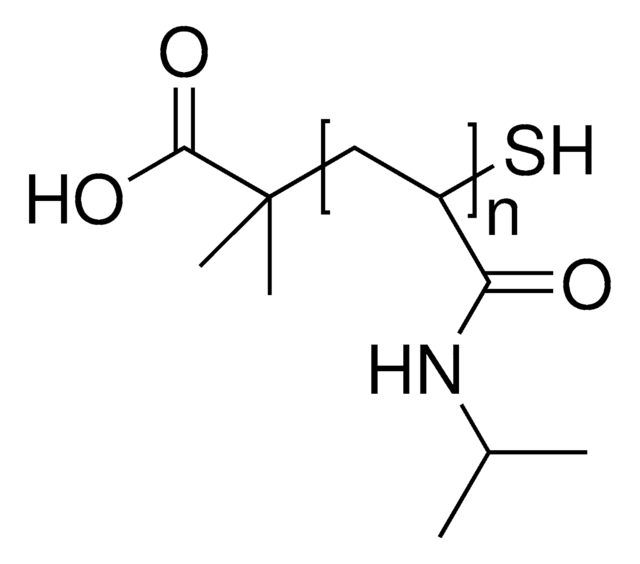733350
Bis[2-(2-bromoisobutyryloxy)undecyl] disulfide
97%
Synonym(s):
11,11′-Dithiobis[1-(2-bromo-2-methylpropionyloxy)undecane], DTBU
About This Item
Recommended Products
Assay
97%
form
solid
solubility
1.500 at 20 °C
density
1.177 g/mL at 25 °C
SMILES string
CC(C)(Br)C(=O)OCCCCCCCCCCCSSCCCCCCCCCCCOC(=O)C(C)(C)Br
InChI
1S/C30H56Br2O4S2/c1-29(2,31)27(33)35-23-19-15-11-7-5-9-13-17-21-25-37-38-26-22-18-14-10-6-8-12-16-20-24-36-28(34)30(3,4)32/h5-26H2,1-4H3
InChI key
IEGYEGYUHSQEAZ-UHFFFAOYSA-N
Application
Signal Word
Warning
Hazard Statements
Precautionary Statements
Hazard Classifications
Eye Irrit. 2 - Skin Irrit. 2 - STOT SE 3
Target Organs
Respiratory system
Storage Class Code
11 - Combustible Solids
WGK
WGK 3
Flash Point(F)
Not applicable
Flash Point(C)
Not applicable
Certificates of Analysis (COA)
Search for Certificates of Analysis (COA) by entering the products Lot/Batch Number. Lot and Batch Numbers can be found on a product’s label following the words ‘Lot’ or ‘Batch’.
Already Own This Product?
Find documentation for the products that you have recently purchased in the Document Library.
Customers Also Viewed
Articles
ATRP is a successful method for precise polymer synthesis with controlled molecular weights and high chain end functionalities.
ATRP is a successful method for precise polymer synthesis with controlled molecular weights and high chain end functionalities.
ATRP is a successful method for precise polymer synthesis with controlled molecular weights and high chain end functionalities.
ATRP is a successful method for precise polymer synthesis with controlled molecular weights and high chain end functionalities.
Protocols
Polymerization via ATRP procedures demonstrated by Prof. Dave Haddleton's research group at the University of Warwick.
Polymerization via ATRP procedures demonstrated by Prof. Dave Haddleton's research group at the University of Warwick.
Polymerization via ATRP procedures demonstrated by Prof. Dave Haddleton's research group at the University of Warwick.
Polymerization via ATRP procedures demonstrated by Prof. Dave Haddleton's research group at the University of Warwick.
Our team of scientists has experience in all areas of research including Life Science, Material Science, Chemical Synthesis, Chromatography, Analytical and many others.
Contact Technical Service![Bis[2-(2′-bromoisobutyryloxy)ethyl]disulfide](/deepweb/assets/sigmaaldrich/product/structures/154/479/8d52d6e3-59da-4e56-8d9e-41b636138ca6/640/8d52d6e3-59da-4e56-8d9e-41b636138ca6.png)












